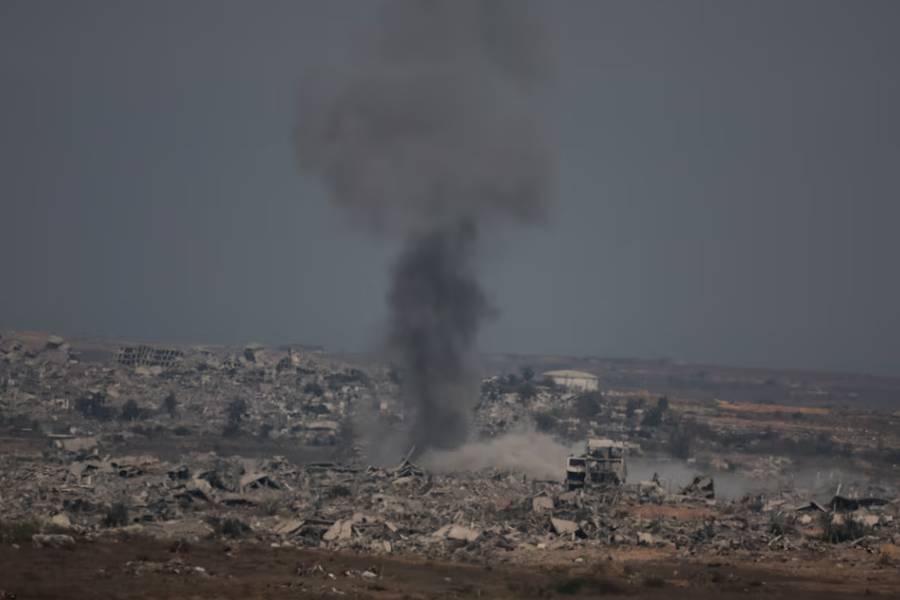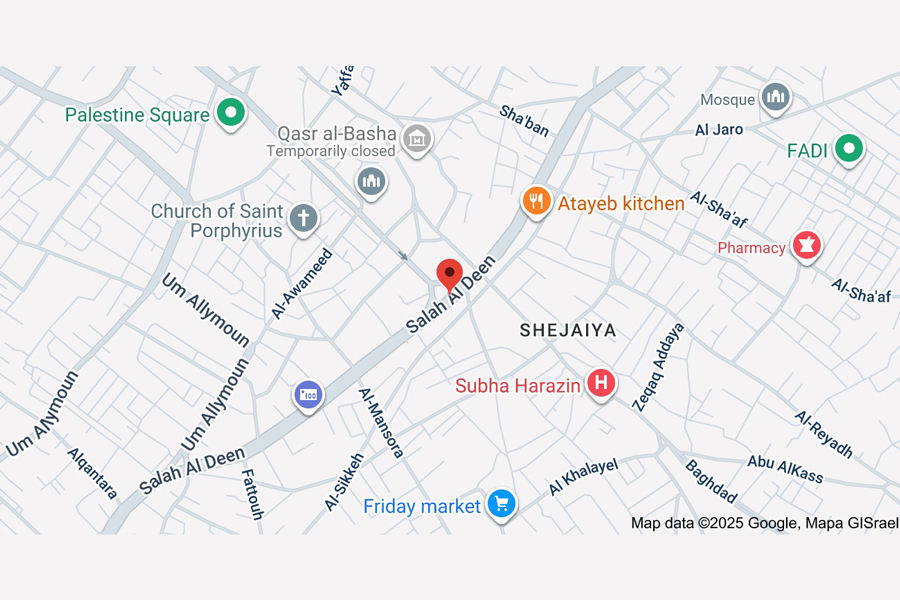Gaza ceasefire: The politics behind a fragile truce
Palestinians walk past the rubble of destroyed buildings, amid a ceasefire between Israel and Hamas, in Gaza City, November 2, 2025. FILE PHOTO: REUTERS
When Donald Trump unveiled his latest peace proposal, arriving in Sharm el-Sheikh to mark the ceasefire between the Hamas and Israel, he declared it to be "the first real peace in the Middle East in 3,000 years," even hinting that a Nobel Peace Prize might be in the offing. Yet, the ground reality emerging just days into the truce suggests that this moment of hope may already be slipping into the realm of illusion.
The ceasefire formally took effect on October 10 this year, following two years since the deadly October 7 attack in 2023. Israel committed to a phased withdrawal, while Hamas agreed to release hostages in exchange for thousands of Palestinian prisoners.
Yet, within days, the truce came under strain. Israel resumed air strikes and halted humanitarian aid convoys, citing alleged violations by Hamas. According to Al Jazeera, Israeli attacks in Gaza since the ceasefire, killing at least 236 Palestinians and wounding another 600, suggest that Israel is pursuing a policy of "Lebanonising" Gaza—officially ending the war but maintaining the right to conduct attacks whenever it chooses, indefinitely. This uneasy calm now unfolds against the backdrop of a new proposal from Washington.
Donald Trump announced that a US-coordinated international stabilisation force would be deployed in Gaza "very soon," amidst a fragile truce and a worsening humanitarian crisis caused by continued Israeli bombardment. His declaration coincides with UN Security Council plans to establish a stabilisation force of 20,000 troops in Gaza, with participation from several Arab countries—Egypt, Qatar, the United Arab Emirates, Saudi Arabia, and Turkiye—authorising them to "use all necessary measures" to implement the mandate. This force, according to the draft plan, would be tasked with protecting civilians, securing border areas, and training Palestinian police. As reported by Al Jazeera, UN Secretary-General António Guterres emphasised that any stabilisation force must have "full international legitimacy."
However, significant challenges remain for this mission to be effective. Hamas has yet to declare whether it will disarm—a central clause of Trump's 20-point plan—and Israel appears to have its own narrative. Tel Aviv remains adamant about excluding Turkiye from the force and insists on retaining full control of Gaza's security apparatus.
During a joint press conference with Trump in September 2025, Israeli Prime Minister Benjamin Netanyahu told reporters, "Israel will retain security responsibility, including a security perimeter, for the foreseeable future" in Gaza. Washington has clarified that it will not deploy US troops, while Guterres reiterated that any deployment must possess international legitimacy and be genuinely aimed at supporting Palestinians in Gaza.
The notion of a "stabilisation force," while promising on paper, risks becoming another layer of geopolitical management—neither true peacekeeping nor state-building, but rather a mechanism for perpetuating external control under the veneer of international cooperation.
Politics disguised as peace
Behind the signing photo-op lies a stark truth: this deal appears tailored more for political expediency than for genuine reconciliation. Netanyahu, historically sceptical of Palestinian statehood, accepted the agreement under heavy US pressure and growing domestic disquiet. The structure of the deal reflects his priorities: retain control, delay statehood, placate hostages' families, and stall elections.
Meanwhile, Palestinians once again find themselves offered promises of "future sovereignty" without any immediate path to real political power. The terms favour Israel's strategic interests—continued settler expansion in the West Bank, maintenance of military dominance, and the relegation of Gaza to a subordinate status.
At the heart of the conflict—the two-state solution—remains entirely sidestepped. Netanyahu has publicly opposed Palestinian statehood, while Israeli settlers continue expanding their presence in the West Bank under army protection. These realities speak louder than any diplomatic rhetoric.
In Gaza, the practical outcome is a territory still dependent, fractured, and dominated by external forces rather than governed by its own people. As Israel presses ahead with its military-first doctrine, it is losing legitimacy abroad and among younger US demographics. Polls show weakening US support for Israel, especially among Generation Z, progressives, and even some evangelical voters. According to scholar Shibley Telhami, "For Israel, the war for American public opinion is existential." The battlefield may yield tactical victories, but the global narrative is steadily slipping away.
Gaza today lies in ruins—a humanitarian catastrophe of staggering proportions. Over 92 percent of buildings are damaged, and more than 60 million tonnes of debris await clearance. A joint assessment by the World Bank, United Nations, and the European Union estimates reconstruction needs at $53.2 billion over the next decade.
Yet under the terms of the ceasefire, Israel has restricted aid flows and refused to reopen the key Rafah crossing until hostages' remains are handed over—a stalling tactic with severe humanitarian consequences. Meanwhile, Gulf states such as the UAE and Saudi Arabia remain willing to fund reconstruction but with political strings attached. International efforts to rebuild Gaza without genuine Palestinian governance risk becoming yet another mechanism of external control.
Despite the destruction and betrayal, the human spirit in Gaza endures. Displaced families return to charred homes; children go back to shattered schools; and amidst the rubble, life continues. They have lost almost everything—yet their will to begin again remains. This resilience is not merely admirable—it is a statement of defiance: a refusal to accept defeat or submit to permanent subjugation.
Today, the ceasefire is both a lifeline and a trap. Israel holds the arrangement hostage to its political agenda; Palestinians cling to the fading promise of self-determination. Recent reports indicate that Israeli forces now control more than half of Gaza under the so-called "yellow line," shrinking the territory into enclaves and cutting off exits to the outside world.
Seen in this light, the truce resembles less a genuine pathway to peace and more a strategic pause—a breathing space for Israel to reconfigure control and for Palestinians to await a salvation that may never come.
Now the question arises: will the international community insist on accountability, inclusive governance, and a genuine political horizon? Or will the theatrics of peace continue to mask the permanence of occupation?
The question is no longer whether peace is possible, but whether we still believe it is worth pursuing.
Brigadier General (retd) Mustafa Kamal Rusho works at the Osmani Centre for Peace and Security Studies.



 timesofindia.indiatimes.com
timesofindia.indiatimes.com












































